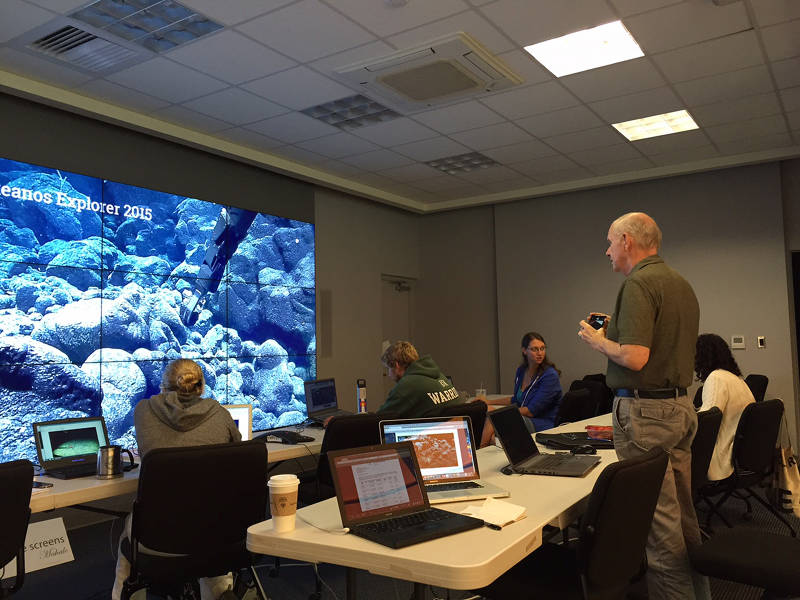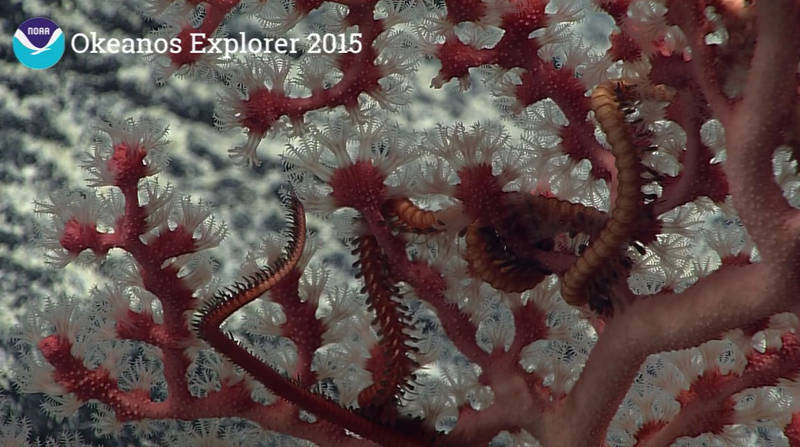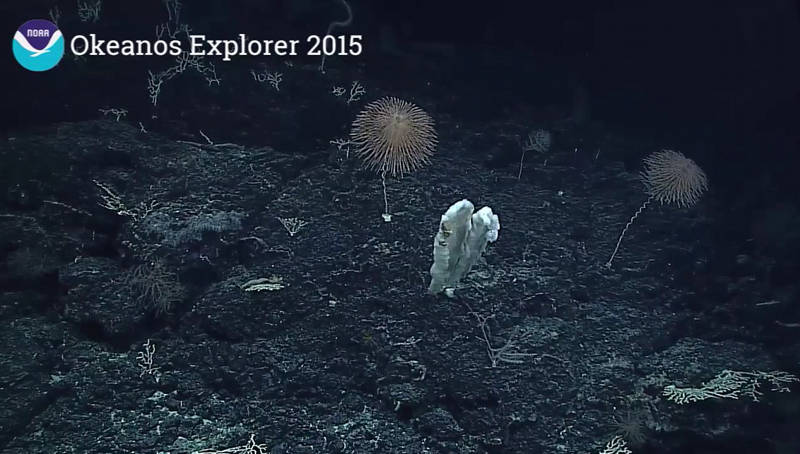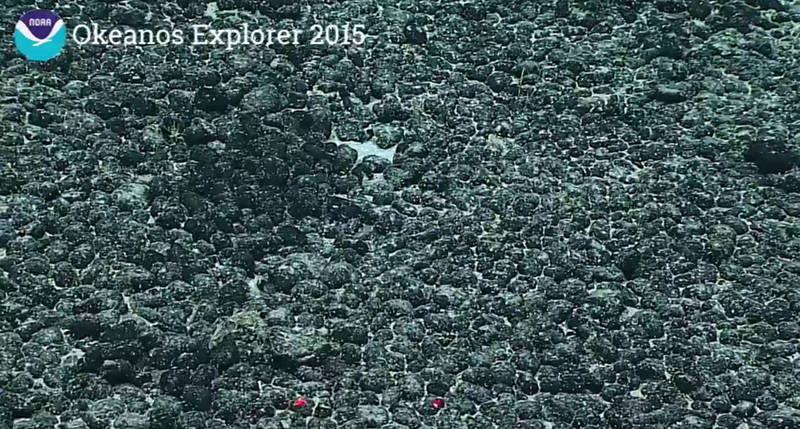
By Amanda Ziegler - PhD Student, University of Hawaii
August 20, 2015

Scientists participate in the dive via telepresence at the University of Hawaii Exploration Command Center. Image courtesy of the NOAA Office of Ocean Exploration and Research, 2015 Hohonu Moana. Download larger version (jpg, 533 KB).
In 2009, I was a young marine-biology undergraduate at the University of Rhode Island, eager to learn almost anything about the ocean. I had already chosen deep-sea biology as a particularly interesting field and found myself quickly caught up in the flourish of excitement when the Inner Space Center opened its doors that year.

Arms of brittle stars (Ophiuroidea) seen interwinted within the structure of a vibrant, pink deep-water coral (Octocorallia). Image courtesy of the NOAA Office of Ocean Exploration and Research, 2015 Hohonu Moana. Download larger version (jpg, 798 KB).
Since then, I have eagerly watched numerous live dive feeds exploring a range of deep-sea habitats, from abyssal plains and seamounts to vents and seeps around the world. Now, as a fourth year PhD student at the University of Hawaii (UH) focusing on the ecology and diversity of deep-sea hard-substrate communities, I am finally directly involved with my first Okeanos Explorer expedition as an on-shore scientist working from the newly established Exploration Command Center at the UH Manoa.

A lush "garden" of sponges, corals, and whimsical Iridogorgia bella (an octocoral). Image courtesy of the NOAA Office of Ocean Exploration and Research, 2015 Hohonu Moana. Download larger version (jpg, 329 KB).
The dives have been spectacular so far, revealing massive sponges, a great diversity of deep-water corals, and a plethora of associated invertebrates. The remotely operated vehicle (ROV), Deep Discoverer, has captured stunning imagery of these organisms, which will aid in identification, as many remain unknown and new to science.
I watched eagerly from the Exploration Command Center set up at the UH Manoa as we collected the first specimens from a seamount north of French Frigate Shoals. The science team congratulated the ROV pilots on a successful collection and though it was not my sample being collected, I felt a sense of pride for the field I’ve chosen to work in. It has been a great opportunity to be a part of such a tight-knit science community and contribute to the communication of deep-sea science to a broad audience worldwide.

A pavement of manganese nodules. Image courtesy of the NOAA Office of Ocean Exploration and Research, 2015 Hohonu Moana. Download larger version (jpg, 459 KB).
The dives planned offshore of Johnston Atoll this September will be of particular interest to me, as the Okeanos Explorer will be visiting guyots (flat-topped seamounts) and seamounts with polymetallic nodules. Part of the work I have been involved with here at the University of Hawaii along with Dr. Diva Amon and Dr. Craig Smith has been characterizing the megafaunal communities of polymetallic-nodule fields in the Clarion-Clipperton Zone (CCZ) located southeast of the Hawaiian islands. These dives will provide an extremely useful comparison to those we have conducted in the CCZ regarding the megafauna. These observations will expand our knowledge of the ranges of these megafauna and help to answer larger questions about the biogeography of fauna inhabiting areas of high polymetallic-nodule abundance.
I look forward to watching more dives and participating as an on-shore scientist for the remainder of the dives here in the Pacific and hopefully in the future as well.